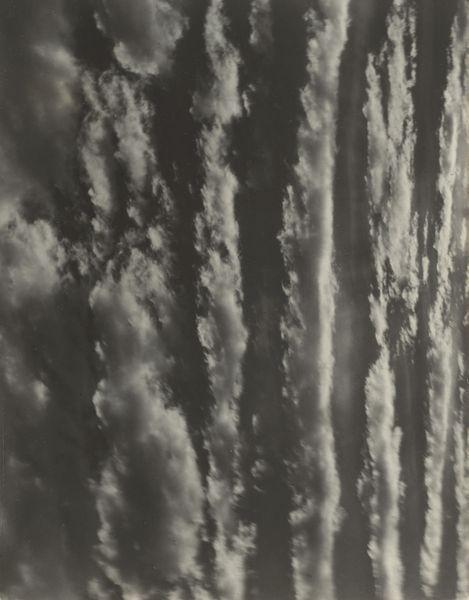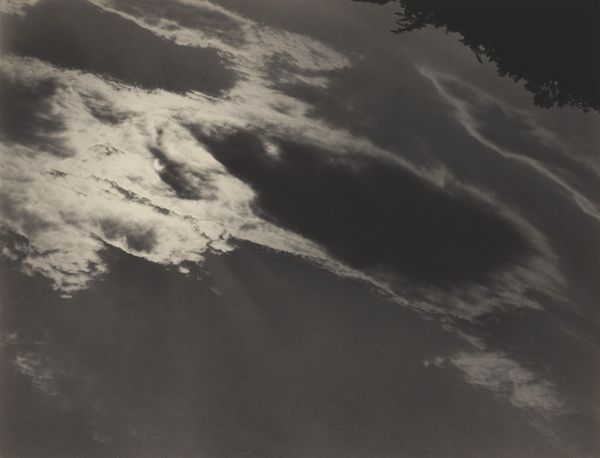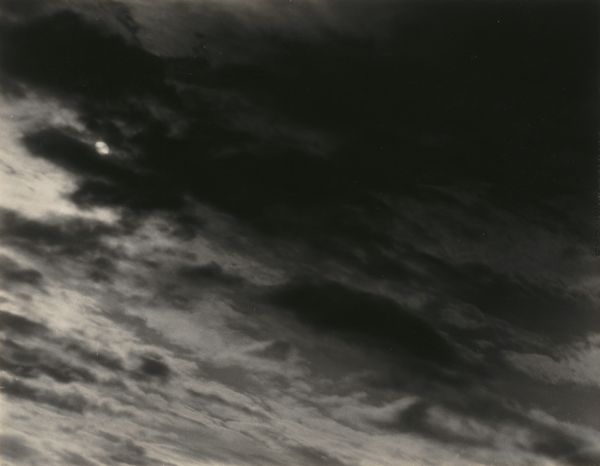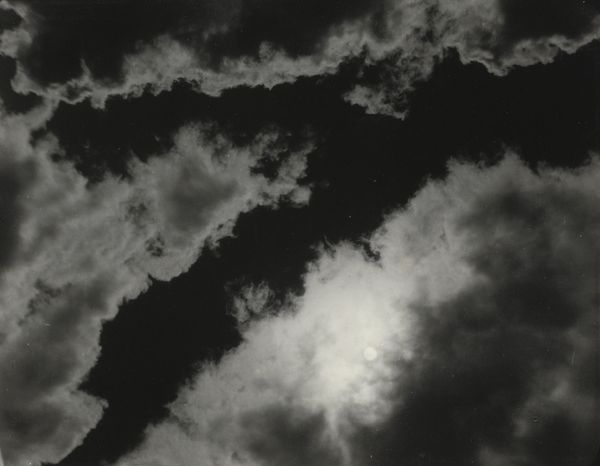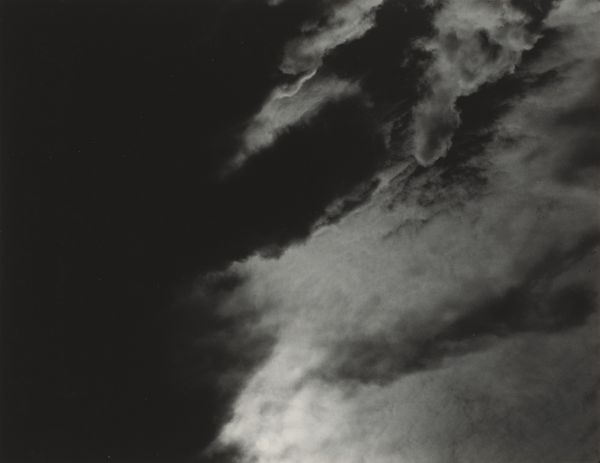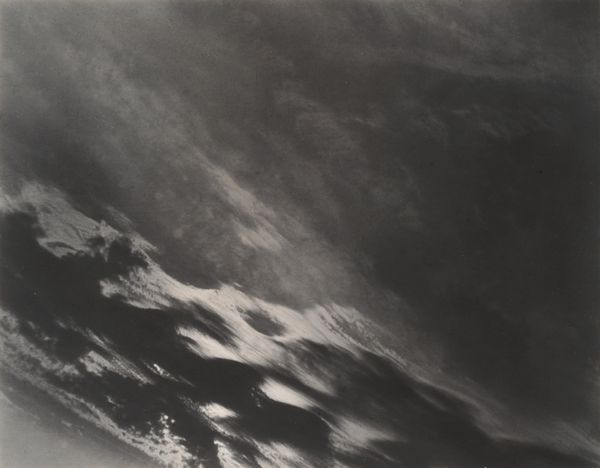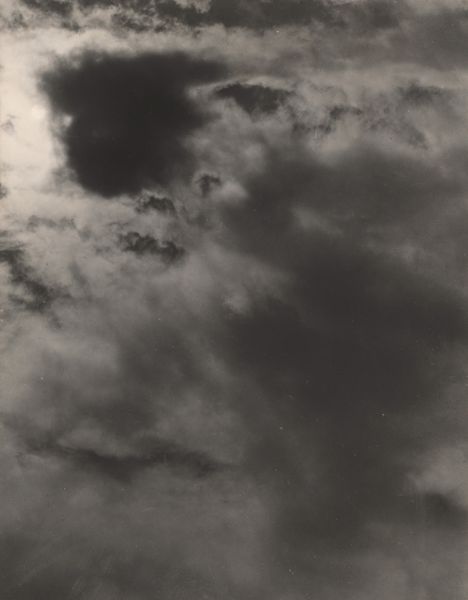
Dimensions: sheet (trimmed to image): 9.3 x 11.8 cm (3 11/16 x 4 5/8 in.) mount: 34.2 x 27.7 cm (13 7/16 x 10 7/8 in.)
Copyright: National Gallery of Art: CC0 1.0
Curator: Looking at Stieglitz's gelatin-silver print, "Equivalent," from 1925, I'm immediately struck by its sheer atmospheric presence. The monochromatic tones create an incredible range, from the softest greys to near blacks, all in what appears to be a skyscape. What's your take? Editor: It feels melancholic to me. The swirling clouds evoke a sense of drama, but also fragility, like impermanence is visualized. And considering this work was created post-WWI, one can see a larger social reflection about that turbulent time period, when social certainties shifted. Curator: I agree about the fragility, and Stieglitz himself spoke of these photographs as being "equivalents" to his own feelings, states of mind almost rendered visible. But how far can we really extend social reflections, beyond just feeling, from what are essentially cloud formations? Isn't that a bit too literal? Editor: Not necessarily. The artist often uses landscape as a metaphor for internal emotional landscapes. So here, these clouds aren't just clouds; they are symbols loaded with cultural meaning. We can reflect upon ideas of Romanticism where nature is sublime or look at later eco-critical discourses about human intervention upon nature and find an equivalent within this image. The fact this artwork embraces modernism yet still uses landscape makes this conversation ever relevant. Curator: True. His move toward abstraction through the "Equivalents" series marks such a pivotal point in his career. Giving up objective reality, in favor of expressing a more internal, emotive truth through photographic means—genius. I wonder what it felt like to view this series during its early exhibition. Did it resonate as powerfully back then as it does now, or were viewers more interested in identifying the actual scene itself? Editor: Perhaps the immediate audience might not have had the theories to conceptualize it like we do now, but the departure from realism still resonated due to this post-war period and need for an internal search that connected individuals, but through abstraction, not just a "pretty" scene. That would not have served an era marked by immense uncertainty, violence, and transformation. Curator: Such interesting insight, as always. It reframes my perception of this piece. "Equivalent" takes on a heavier weight when considered within this historical and social context. Editor: And sometimes we need to bring these perspectives forward to see art as the reflection of larger struggles and collective dreams. Thank you for the insights!
Comments
No comments
Be the first to comment and join the conversation on the ultimate creative platform.

